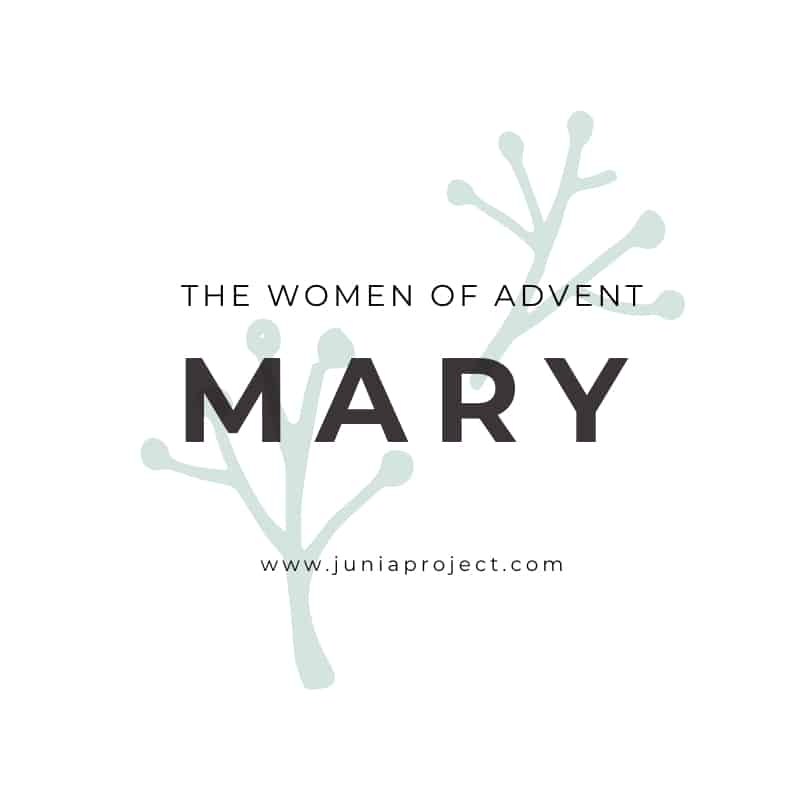In this 5-part Advent series we look at the women in Christ’s lineage: Tamar, Rahab, Ruth, Bathsheba, and Mary of Nazareth. Read some of Mary’s story in Luke 1 & 2.
Being nurtured in a Wesleyan Holiness tradition, I have not always had a deep appreciation for the mother of Jesus, Mary of Nazareth. Protestants in our world may neglect, either intentionally or unintentionally, the most obvious and powerful example of Jesus treasuring women: his mother. The gospel writers depict Mary in various ways, with the author of the Gospel of Luke providing the most insight. In Luke 1:28-30, the angel Gabriel approaches the young virgin with these words:
Greetings, favored one! The Lord is with you. Do not be afraid, Mary; you have found favor with God. You will conceive and give birth to a son, and you are to call him Jesus.”
The incarnation is mysterious in mechanics, but the reality of it is crucial for theology. God chooses to speak with women. God chooses and favors women for crucial tasks and at crucial times.[1] It is directly stated in the bible that Mary is intentionally chosen and given a grand task that includes, but also extends beyond, childbearing.
Mary has been commissioned to bring Jesus into the world, of whom the angel later says:
He will be great, and will be called the Son of the Most High, and the Lord God will give to him the throne of his ancestor David. He will reign over the house of Jacob forever, and of his kingdom there will be no end” (Luke 1:32-33).
She does not raise any objections but asks one clarifying question: “how?” (1:34). The final words from the Angel’s mouth could serve as a summary for this story as well as for the greater Story: “For nothing will be impossible with God” (1:37). Mary is satisfied. She replies in willingness and humility with these words:
Here am I, the servant of the Lord; let it be with me according to your word” (1:38).
Mary becomes what Eastern Orthodox Church leaders call theotokos, God-bearer. [2]
At the very least, God’s choice of Mary convinces us that women can be used in God’s purposes. In the incarnation, God shows humanity that restoration is begotten of a woman and therefore she is first in line to see the availability of the Kingdom of God. The fall that enacted her alienation is now reversed and enacts her liberation.
In recent weeks, I have been reading many early writings about Mary as God-bearer, and am increasingly convinced that her life and obedience offer abundant resources. The church needs a deeper theology of women and it is imperative that both genders work together toward that end. In fact, the whole story of redemption demands it.
If it is indeed true that “in Christ God was reconciling the world to himself” (2 Corinthians 5:19) then it stands to reason that Mary’s “yes” and the hospitality of her womb became the fertile ground from which redemption would be birthed. Perhaps, God is free to bring about redemption by whatever means suits God’s purposes. God invited and put confidence in Mary, a young woman, to collaborate in the process of reconciliation.
Swiss theologian Hans Urs von Balthasar suggests that we view the womb of Mary as the birthplace of the church.
It is the womb of Mary, what von Balthasar calls “the room at Nazareth”, which serves as the fertile ground of the church of Christ.[3] It is there that the church, catholic, is founded. The “creaturely counterpart to the infinitely self-bestowing love of God” was the womb of a woman.[4] A selfless, life-giving extension of hospitality offered the bodily necessary space and nourishment for the full expression of God-with-us to be born.
While metaphors fall short of painting a full picture of the church, scripture often speaks of the church as the body of Christ. God came to us with a flesh and blood body. The incarnation of God in the world today is accomplished through the flesh and blood bodies of the body of Christ, the Church. God’s love seeks embodiment. Flesh and blood has always been represented by both female and male.
The church, the body of Christ, serves as space and nourishment (the womb) in order to give birth to new and eternal life.
The life that comes forth is not of human conception; God does it with the cooperation and participation of humans. This particular metaphor of the church as theotokos, God-bearer, is feminine. The God-bearing church in the world will be one that emphasizes careful listening, waiting, and discerning.[5]
On any given day we may face situations where we feel dismissed and devalued by others. In these moments, we are invited to be both bold and humble. It is our turn to pay close attention to those around us who so desperately need the message and reality of God-with-us.
Mary and her obedient God-bearing reminds us that God brings forth beauty and new life when we say “yes” to those tasks and situations in daily life that seem impossible when done on our own and in our own strength.
Did you know that you can support our volunteer work for as little as $5/month? Become a member of our Patreon community and get immediate access to the e-book “Women of Advent”, which contains the five posts in this series with reflection questions, weekly prayer themes, and an epilogue.
NOTES
[1] See Kristina LeCelle-Peterson, Liberating Tradition: Women’s Identity and Vocation, (Grand Rapids, MI: Baker Academic, Kindle Edition, 2008) for discussion with good humor points. She points out that “at this crucial juncture, the impending birth of the most significant person ever born, God does not use a ‘man as the spiritual head of the house’ model, such as many Christians teach as God’s way of doing things. And you think God would want to do it right at the birth of the one and only Son of God,” Location 945.
[2] See Cyril of Alexandria, “On the Incarnation” and John of Damascus, “On the Incarnation and Icons,” Christian Theology Reader, ed. Alister E. McGrath (Malden, MA: Blackwell Publishing, 1998),143-151.
[3] Hans Urs von Balthasar, The von Balthasar Reader, ed. Kehl and Loser, New York: Crossroads, 214.
[4] Ibid.
[5] See Kenda Creasy Dean and Ron Foster, The Godbearing Life, Nashville, TN: UpperRoom Books, 1998, for a thorough treatment of the “art” of Godbearing in the context of youth ministry.
Updated 12/6/2021




4 Comments
This is a well written and sound post. Thank you Roberta and we will all benefit from your upcoming posts.
Excellent article! I agree wholeheartedly. As a Christian, I perceived that Catholics elevated Mother Mary and made her as important as Jesus in their faith. In the Christian faith we disregard the value and importance of Mary. Thank you for articulating the importance and value of Mary in the gospel.
Beautiful meditation, thanks! Indeed, Mary was chosen for divine motherhood, and her immaculate conception happened in anticipation of the incarnation and the redemption. Makes sense, because she was born before the sacramental economy; but why is it that, after the redemption, baptized women cannot be chosen for sacramental motherhood via ordination to the ministerial priesthood?